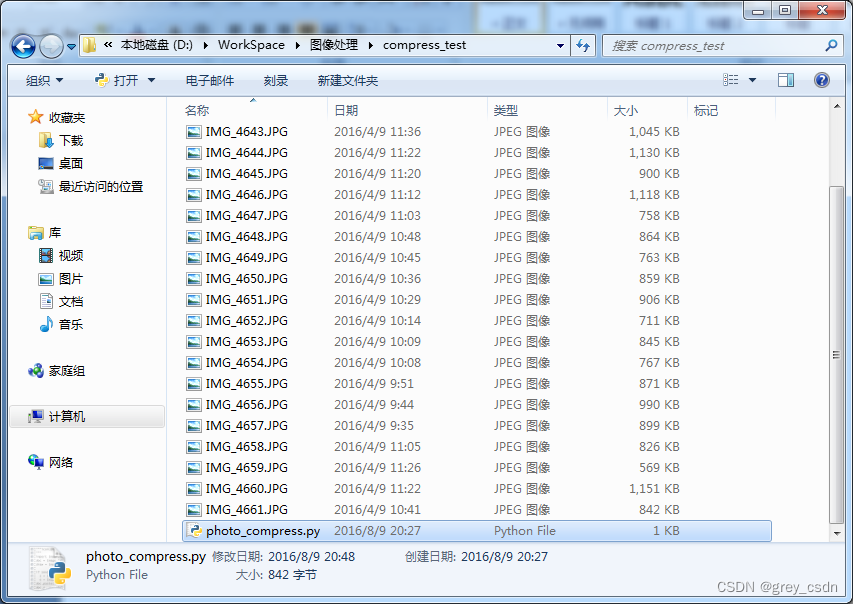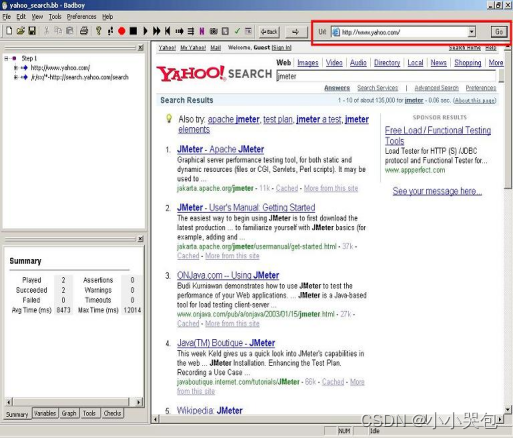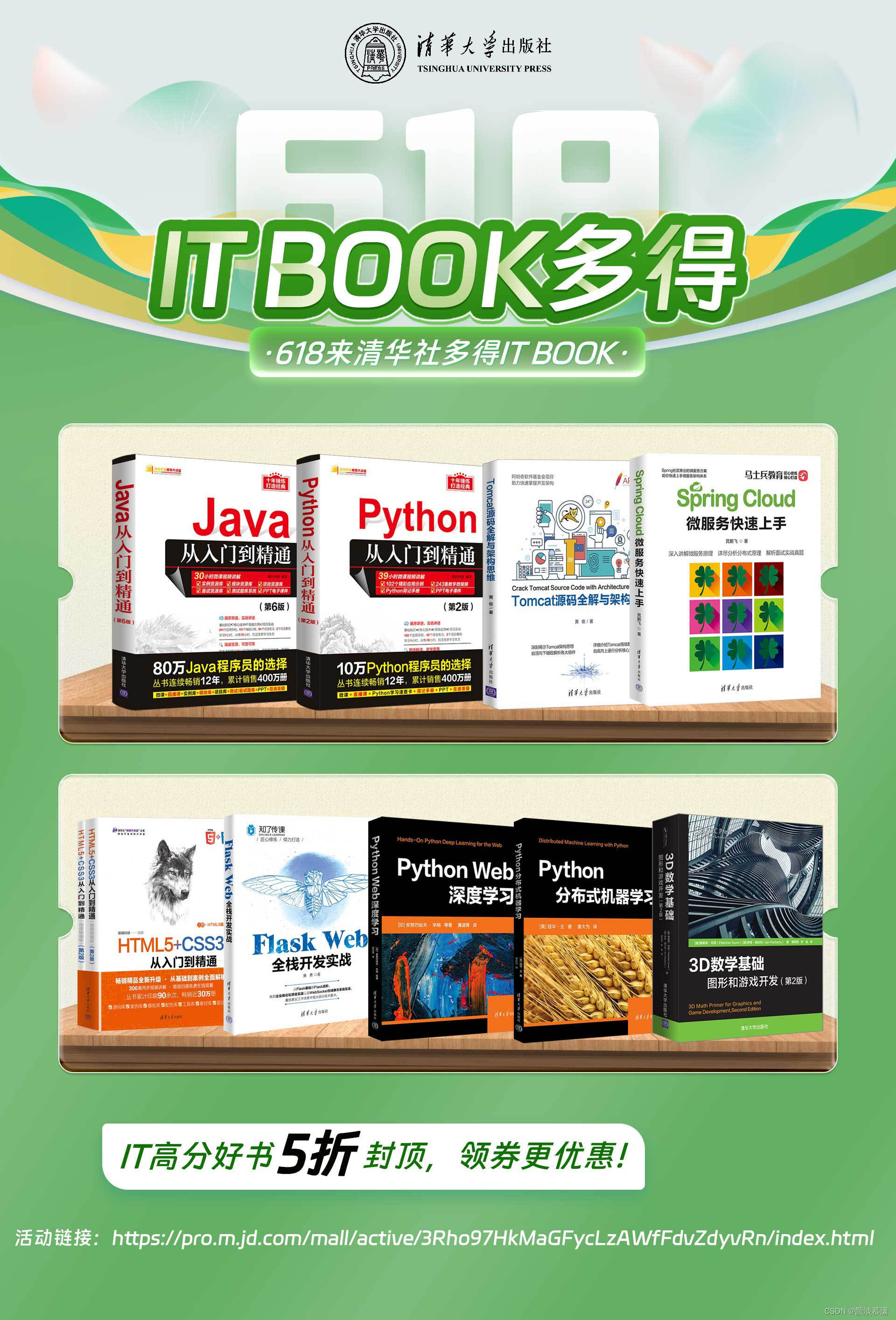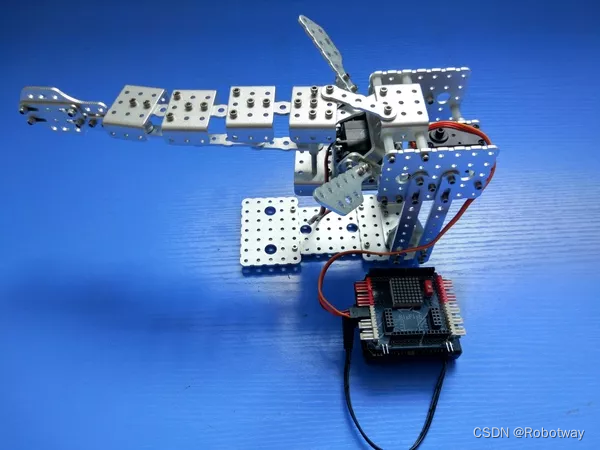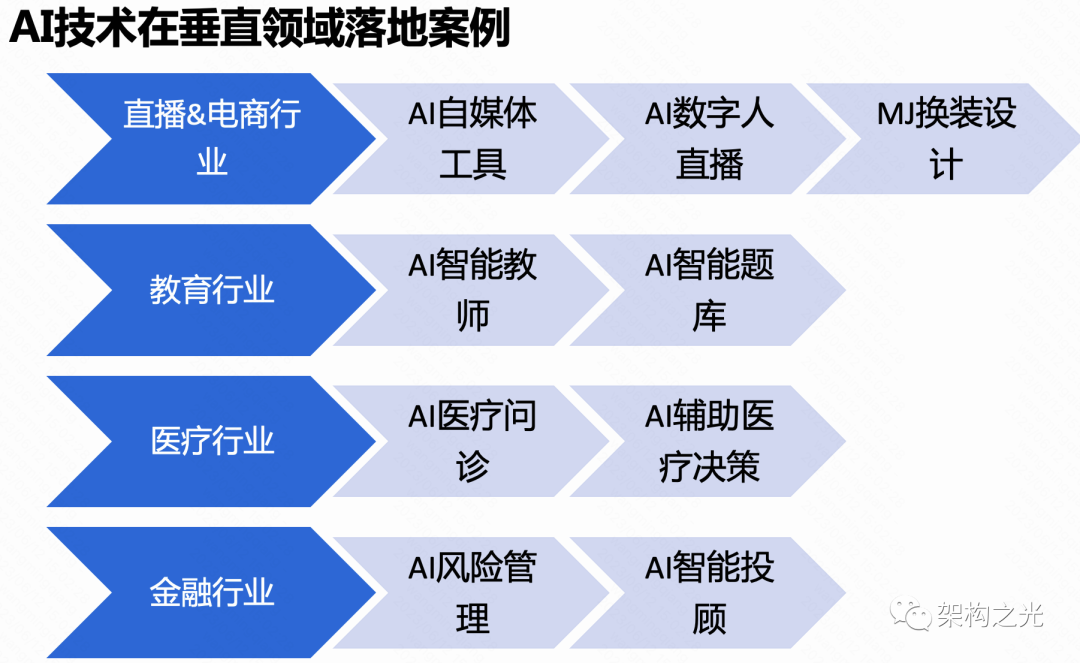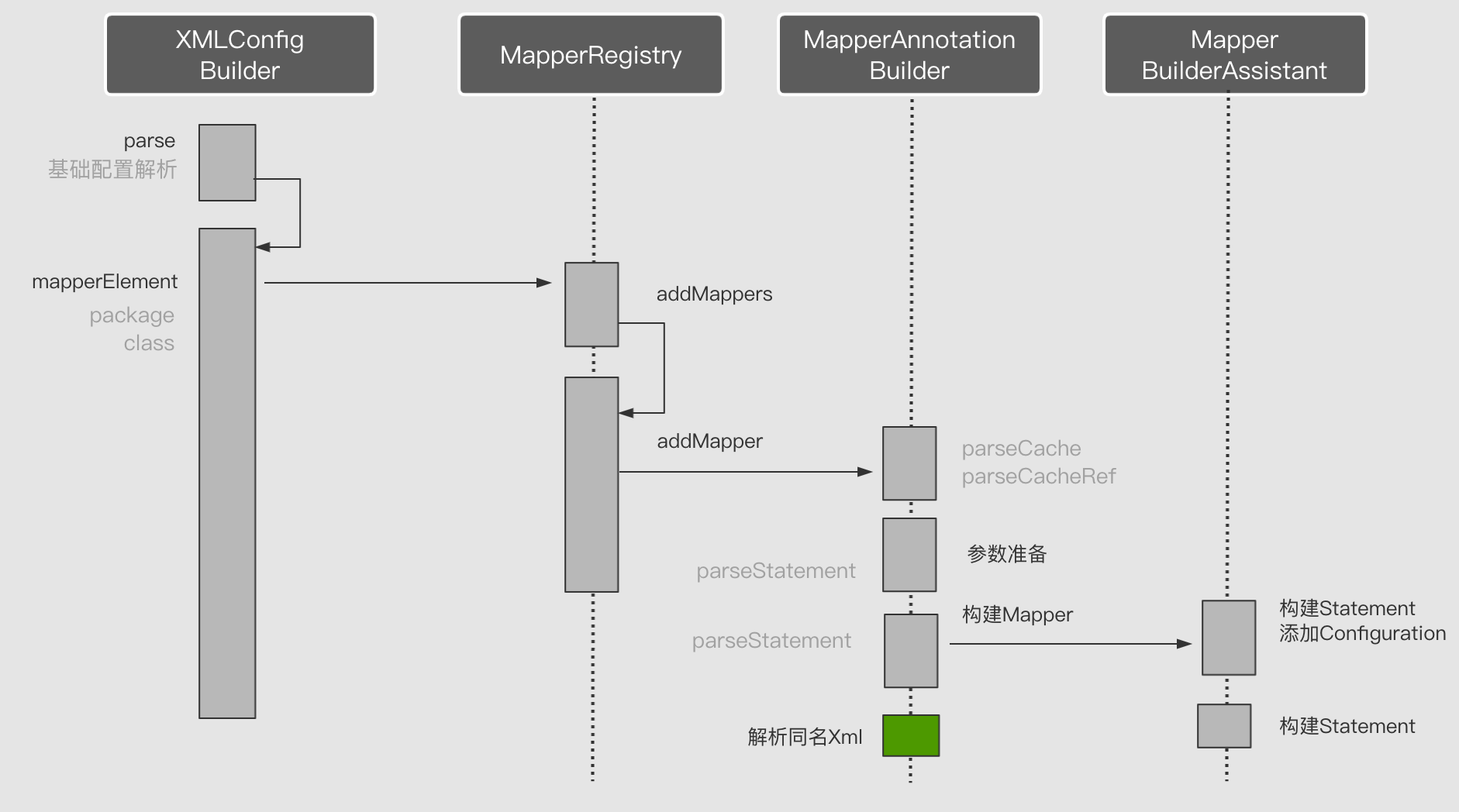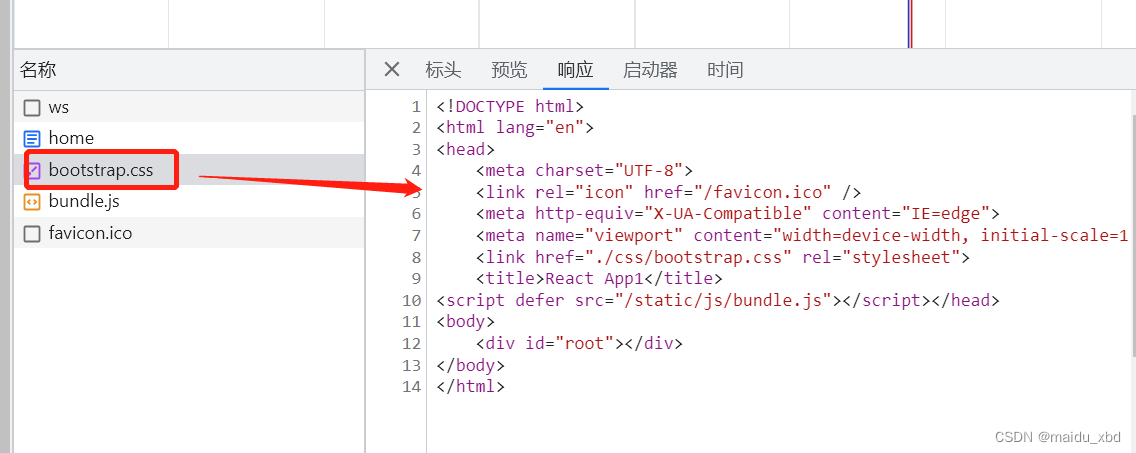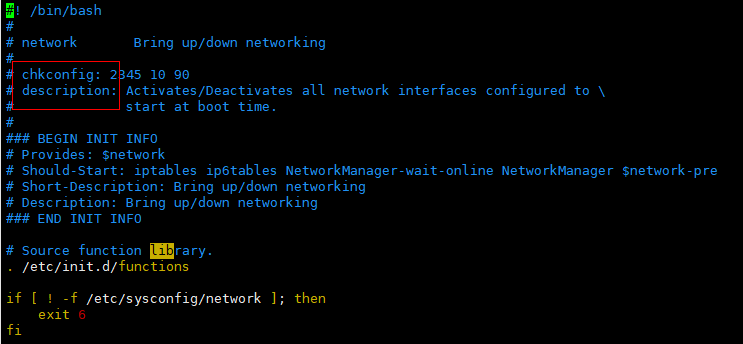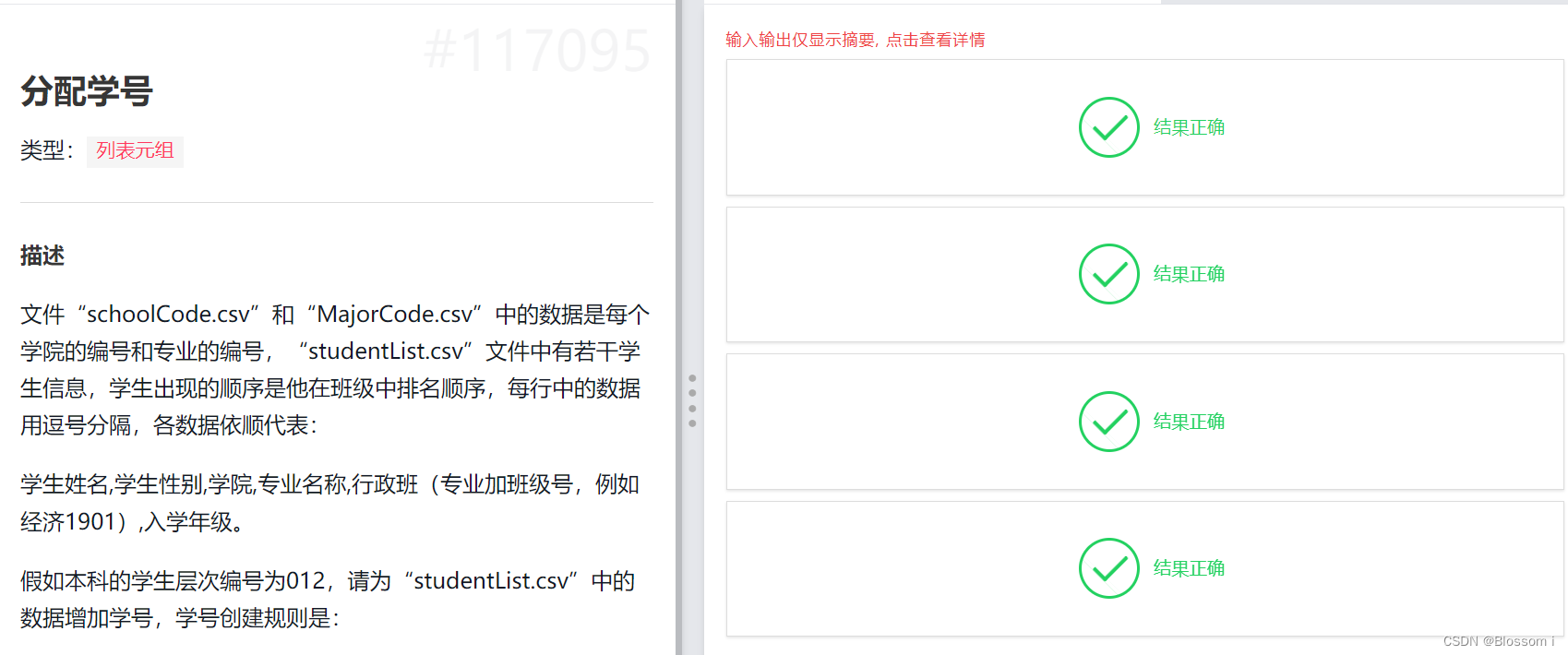第一章 英语知识填空题
一、语法
1.词法:介词将关系建立在人/物A与人/物B,可能会形成修饰限制关系,有定语成分;介词将关系建立在事A与物B,可能有事A动作发生时环境因素,有状语成分;写作中经常用到介词at,in,on:(1)时间关系介词:①<FILL.TAG>at</FILL.TAG>用在精确的时间点(如钟点);②<FILL.TAG>in</FILL.TAG>用在时间段;(in本身就表示在…时间之内)(in加某年某月);③<FILL.TAG>on</FILL.TAG>用在特定某一天(on某一天);(2)位置关系介词:①<FILL.TAG>at</FILL.TAG>用在精确的地点;②<FILL.TAG>in</FILL.TAG>用在大范围地点;③<FILL.TAG>on</FILL.TAG>在…上面;④above在…上方(与事物没有接触的);⑤over在…上方(与事物没有接触的);⑥beneath在…下面(与事物有接触的)。(3)方式关系介词:①<FILL.TAG>by</FILL.TAG>通过…方式;②<FILL.TAG>in</FILL.TAG>采用…方式(比较小众,in表采用…方式,一般只能后接三种:语言、货币和this way);③<FILL.TAG>with</FILL.TAG>用…东西/工具。
2.复杂句讲句子成分:定语对名代词<FILL.TAG>修饰</FILL.TAG>限定;同位语对名代词<FILL.TAG>解释</FILL.TAG>说明。状语是<FILL.TAG>动作</FILL.TAG>发生时环境因素和副词;宾语补足语是动作产生后<FILL.TAG>结果</FILL.TAG>。
(1)定语:①形容词做定语:前置;②介词短语做定语,翻译要注意,“<FILL.TAG>的</FILL.TAG>”字要翻译,名代词加介词短语是词组,不可翻译为句子。③不定式(to do)做定语(不定式做定语,一般表示有做某事的倾向):介词短语和定语从句,后置。不定式的翻译没有严格要求,somewhere to live居住的地方;地方去住。
状语:①动作的程度、范围、幅度;动作发生的环境因素(联想中文:在什么情况下、因为什么原因、在什么时间、在什么地点、以什么方式、针对谁做出了这样的动作,这些什么都是状语。)②状语成分的分类:其中,动作发生的环境因素,一般要包括动作发生的时间、地点、方式、条件、对象、起因、目的、结果、比较等,以及动作发生时的伴随状态等方面。 ③状语成分在句中的位置:1)一般置于句<FILL.TAG>尾</FILL.TAG>;2)表示强调该状语时,可置于句<FILL.TAG>首</FILL.TAG>;3)表示频率、程度或范围等的副词做状语时,一般习惯置于动词前,也可以放置动词后。
(2)句子的时态和句态:动作发生的时间,即为“时”;动词的样子或状态,即为“态”。①遇到时间是具体过去的时间,就要用过去时。其他都可以用<FILL.TAG>完成</FILL.TAG>时表达。
3.定语从句:三要素:<FILL.TAG>先行</FILL.TAG>词(被定语从句所修饰或限定的名词或代词)、<FILL.TAG>关系</FILL.TAG>词(引导定语从句的词)和<FILL.TAG>定语</FILL.TAG>从句。
(1)判断从句是定语从句或是名词性从句的标准:从句前有无<FILL.TAG>先行</FILL.TAG>词。
(2)第一点判断先行词,因先行词是定语从句根本(或先行词决定关系词的使用)。有先行词,则第二点判断关系词,从从句成分入手。缺成分,用关系<FILL.TAG>代</FILL.TAG>词(先行词是人,关系代词用who/that,物则which/that);不缺成分,用关系<FILL.TAG>副</FILL.TAG>词(先行词是时间类,关系副词用when,地点类用where,原因类用why)。
(3)省略是否会造成主句主语归属问题,不造成,可省略;造成,<FILL.TAG>不</FILL.TAG>可省略。
(4)关系代词引导的从句部分是be doing/done(进行时/被动),关系代词和<FILL.TAG>be</FILL.TAG>都可省略。(关系代词be doing/done,只留doing/done。)关系副词:表地点的where,表时间的when,表原因的why,因从句不缺成分,才使用关系副词,其在句子中起连接前后作用,表明when是代替time。在某种固定情况下可省略。特殊情况:that会充当关系副词,如与way搭配时,且可被省略。
(5)定语从句,介词提前,关系代词不可省,介词后接宾格,人用whom,物用which,不可用<FILL.TAG>that</FILL.TAG>。
(6)总结:定语从句,要有先行词,区分人或物。再定关系词,从句成分定,缺少用代词,不缺用副词,whose最后试。代词省略看主语,主从主语很明确,那就可省略。副词省略看先行,同义<FILL.TAG>可省略。分词短语去掉代词be。介词提前代词变宾格不可省。(解读:第一点判断是否有先行词,因先行词是定语从句根本(或先行词决定关系词的使用)。有先行词,则第二点判断关系词,从从句成分入手。缺成分,用关系代词(区分人或物的作用:先行词是人,关系代词用who/that,物则which/that);不缺成分,用关系副词(先行词是时间类,关系副词用when,地点类用where,原因类用why)。)
(7)定语与定语从句的位置区别:定语可前置和后置于名词或代词;定语从句<FILL.TAG>后</FILL.TAG>置于名词或代词。
(8)定语从句起修饰作用,去修饰先行词,通过关系词连接表达修饰关系,修饰的成分在定语从句中。先行词决定关系词的使用,定语从句的成分缺失决定关系词的使用。(可见关系词较多,需要先行词和从句成分缺失决定)。
4.名词性从句:包括主语从句、宾语从句、同位语从句和表语从句。做主句什么<FILL.TAG>成分</FILL.TAG>,就是什么从句。
5.宾语从句:主句缺宾语,该从句为宾语从句。
(1)陈述句做宾语从句,连接词为<FILL.TAG>that</FILL.TAG>,可省略。
(2)一般疑问句做从句宾语:连接词为<FILL.TAG>whether</FILL.TAG>/if;语序变陈述。If限制比较多,一般情况下都用whether。
(3)特殊疑问句做宾语从句:连接词为<FILL.TAG>特殊疑问词</FILL.TAG>,语序变<FILL.TAG>陈述</FILL.TAG>。
6.主语从句:
(1)主语从句中it做形式主语,翻译时先翻译句末的主语从句。
7.同位语从句:
8.表语从句:
9.状语从句:九大类状语从句和连词
(1)时间状语从句:①连词:<FILL.TAG>when</FILL.TAG>/ while/ as:当…的时候,在…期间 ; <FILL.TAG>whenever</FILL.TAG>:无论何时; <FILL.TAG>before</FILL.TAG>/after:在…之前/在…之后; <FILL.TAG>since</FILL.TAG>:自从…起 ; <FILL.TAG>until</FILL.TAG>/ till:直到…。②<FILL.TAG>when</FILL.TAG>可接延续性动词和瞬时动词;<FILL.TAG>while</FILL.TAG>只接延续性动词,如不可用finish,可用watch;<FILL.TAG>as</FILL.TAG>只接延续性动词;as可以引导时间、比较、条件、让步状语从句。
(2)地点状语从句:连词:where, wherever, anywhere, everywhere 等。特点:文章很少出现,连词也很少。了解。
(3)原因状语从句:连词有<FILL.TAG>because</FILL.TAG> /in that(因为), as(由于), since(既然), now(that)(既然), when(既然), seeing (that) (由于,鉴于), considering (that)(考虑到), given (that)(考虑到),for(为)等。
(4)目的状语从句:是用以补充说明主句中谓语动词发生的目的。常用引导词:<FILL.TAG>so that</FILL.TAG>以便于, in order that 目的是;特殊引导词:lest(唯恐,以免), for fear that(以免,唯恐),on purpose that(目的是…)
(5)结果状语从句:常用引导词:so … that, such … that, so that… ;特殊引导词:such that, to the degree that,to such a degree that。
(6)条件状语从句(重要):联想中文:英文的条件状语从句,是中文的假设关系。常用引导词:<FILL.TAG>if</FILL.TAG>(如果), <FILL.TAG>unless</FILL.TAG>(除非)/if表示如果这样的话(肯定);unless表示如果不这样的话(否定)。特殊引导词:as long as(只要), only if(只有…才), providing/provided that(倘若,条件是…), supposing that, once (一旦), on condition that(如果,在…条件下)。
(7)让步状语从句:
(8)比较状语从句:
二、阅读理解A节
1.经济和社会类文章是历年考试的热点,历年皆有,所占比重在 70%以上;完成时间要求:一篇文章不超过 20 分钟。
2.阅读理解题目分类
(1)细节题:题目的答案可以在原文当中被找到,出题比例很大。命题特点是:把某词语、某个句子或某具体事实用不同于原文的另一方式或句型表达,即同<FILL.TAG>义</FILL.TAG>改写。解题步骤:①读懂问题;②定位:自然段定位,锁定题目的范围;关键词定位,确定所在句子。③对比选项和原文描述,找出其异同(逻辑关系,指代关系)。
(2)推理题:推理题必须以事实为依据,但是得出的结论绝对不能是事实本身,即不能“就事论事”。
(3)主旨题:文章(或段落)主旨的位置,一般都在首段(句)或尾段(句)(若文章的首段内容是引用举例,则主旨大概率出现在文章的第二段或尾段)。偶尔也有主旨出现在其他位置,甚至需要考生总结得出的情况。 ① 主旨题的正确选项特点:<FILL.TAG>不</FILL.TAG>应该是细节信息; <FILL.TAG>不</FILL.TAG>含过分确定或是绝对意义的词;② 错误选项的特点:大多以偏概全,不能涵盖全文内容;出现<FILL.TAG>细节性</FILL.TAG>的名词信息;过于笼统;
(4)观点态度题:中心思想反映作者观点态度。
(5)词义句意题:选出选项后一定要代入文章,看其是否与文中的语境、句子的结构相符,语义是否流畅来进行检验。
3.阅读注意细项:
(1)阅读时,若确定定语成分,可先不理,先找句子主干,主谓宾或主系表;
(2)阅读常见长难句和复合句,百分之八十。写作尽量<FILL.TAG>不</FILL.TAG>要使用长难句。翻译很少见到长难句。——需复习长难句分析。
三、翻译
(一)翻译解题步骤:
1.第一步:先定位中心谓语<FILL.TAG>动</FILL.TAG>词,是某人做某事的“做”,而不是所有动词都是中心谓语动词,所以不是“run”,而是“ended”。中心谓语动词往往会附带时态。先译为:最长的牛市结束了。加上定语后:在艺术品市场历史的一个世纪里最长的牛市结束了。
2.第二步:区分定语从句:①对于阅读、翻译、写作,区分句子的定语和状语成分,才能找到句子的主语、谓语、宾语,才能进一步分析句子。复杂句是简单句添加修饰性的定语和状语等成分。阅读中需要把长句去掉多余成分,看出<FILL.TAG>主</FILL.TAG>谓宾,就可以知道大概意思。②不定式的翻译没有严格要求,somewhere to live居住的地方;地方去住。
(二)翻译命题原则:来源于英美国家报刊杂志,通常是比较冷门的,平时较少接触到的;具有明显的生活化特点;具有一定的故事性。翻译答题思路:
1.快速浏览文章以把握文意<FILL.TAG>主旨</FILL.TAG>,并标出生词和难句。主旨句比较直接和明显,一般在首段的首句或者尾句就已经出现了。
2.逐句翻译:第一步要标出文章中难以理解的单词和句子。陌生词汇要放到最后处理。运用翻译技巧:
(1)<FILL.TAG>从</FILL.TAG>句的辨认:1)定语从句:名词(或代词)+ 定语从句关系词(who、which、that、whose、where、why、when等);2)名词性从句:主语从句: 句首即为从句连接词(what、whether、that…);名词性从句: 宾语(表语)从句:动词(或介词)+ 从句连接词;同位语从句:同定语从句(不缺成分);3)状语从句:逻辑连词;
(2)翻译技巧:
① 重译法:重复词语,用于明确、强调、生动;XX the principle XX,which XX.翻译:XX原则XX,这项<FILL.TAG>原则</FILL.TAG>XX。解析:which引导的非限制性定语从句,which修饰和替代前文的先行词the principle.
② 增译法:增加词语,合乎中文表达习惯;
③ 减译法:减少词语,合乎中文表达习惯;
④ 词类转译法:改变词类、词类作用和词序;
⑤ 词序调整法:改变词序;
⑥ 正义反译,反义正译:肯定说法变否定说法,否定说法变肯定说法。
1)需要正义反译:deny 否决, 否定→<FILL.TAG>不给予</FILL.TAG> ;miss 错过→<FILL.TAG>没赶上</FILL.TAG>(交通工具); <FILL.TAG>没听</FILL.TAG>(看到)或没懂</FILL.TAG>(看懂) ;divert attention from 将注意力从……移开→没有意识到;be absent未出席, 没来;far from 远非, 完全不;final 最终的→不可改变的</FILL.TAG>;be at a loss 不知所措;rather than/instead of <FILL.TAG>而不</FILL.TAG>;absent-minded 心不在焉的;but for 要不是; 如果没有。
2)需要反义正译的词汇是含有 no 或 not 的一些短语,以及一些带有否定词缀的词,如:no less than 实在是; 正如; 不少于;no less…than 和……一样; 不亚于;no other than 只有; <FILL.TAG>正是</FILL.TAG>;none other than (用以加强语气) <FILL.TAG> 正是</FILL.TAG>, 恰恰是, 不是别人, 正是……;nothing but 只有(是); 只不过;no choice but 别无选择, 只(好)得;unfold 展开, 呈现;disappear 消失, 失踪;carelessly 马马虎虎地, 粗心地。
⑦ 分译法:将一个长句译成两个句子或更多句子。
⑧ 语态变换法:遇到被被动语态时,应遵循汉语习惯,如译成被动语态不通,则译成<FILL.TAG>主动</FILL.TAG>语态。
1)保留其被动语:rubber could be made hard<FILL.TAG>让橡胶变得更硬</FILL.TAG>
2)将被动改为主动翻译成汉语的无主语,如果被动句不含 by 的话:If bad weather is expected<FILL.TAG>如果预测到有恶劣天气</FILL.TAG>;将 that 引导的主语从句仍然译为宾语,但要加上表泛指的词语(如人们、大家、我们等)做主语。如: It is hoped that… <FILL.TAG>人们希望</FILL.TAG>;It is reported that… <FILL.TAG>据报道</FILL.TAG>;It is supposed that… 据推测/<FILL.TAG>人们猜测</FILL.TAG>;It must be admitted that… <FILL.TAG>我们必须承认</FILL.TAG>; It must be pointed out that… <FILL.TAG>我们必须要指出的是</FILL.TAG>;It is asserted that… <FILL.TAG>有人断言</FILL.TAG>/有人主张;It is well known that… <FILL.TAG>众所周知</FILL.TAG>;It will be seen from this that… 由此可以看出;I was told that… <FILL.TAG>我听说</FILL.TAG>;It may be argued that… 有人可能会说/可以说。
(3)通读审校。1)翻译需要表达的是句子或文章的内容,而不是结构。2)英译汉分为阅读理解,汉语表达和校审润色三个阶段,最后的译文定要符合汉语的行文逻辑和习惯。
(三)状语从句翻译方法
1.一般来讲,英语的语义重心在句<FILL.TAG>首</FILL.TAG>,因此作为谓语动作发生背景的多种状语,如表示时间背景 的时间状语、地点背景的地点状语、条件背景的条件状语等通常位于句尾;而汉语恰恰相反,语义重心通常在句<FILL.TAG>尾</FILL.TAG>出现,前面大多是铺垫性的背景表达。有鉴于此,我们可断定,英语的状语在英译汉是通常需要前置,有时前置到句首,有时则前置到所修饰谓语动词的前面(结果状语从句和伴随状语是两大例外)。
(1)时间状语从句 例:Please turn off the light when you leave the room. 翻译:离开房间<FILL.TAG>时</FILL.TAG>请关灯。
(2)地点状语从句 例:Farming is nearly impossible where there is little rain. 翻译:在雨水稀少的<FILL.TAG>地</FILL.TAG>区,农业几乎不可能存在。
(3)原因状语从句 例:The crops failed because the season was dry. 翻译:<FILL.TAG>因为</FILL.TAG>是旱季,作物歉收。
(4)条件状语从句 例:It was better in case they were captured. 翻译:<FILL.TAG>要是</FILL.TAG>把他们捉到了,那就更好了。
(5)让步状语从句 例①:The threat of death does not depress him, even though he has become their chief enemy. 翻译:<FILL.TAG>虽然</FILL.TAG>他成了他们的头号敌人,死亡的威胁也不会让他消沉。 例②:I still think that you made a mistake while I admit what you say. 翻译:<FILL.TAG>就算</FILL.TAG>你说的对,我仍然认为你做错了。(while=although)
(6)目的状语从句 例①:They stepped into a helicopter and flew in the sky in order that they have a bird’s-eye view of the city. 翻译:<FILL.TAG>为了</FILL.TAG>鸟瞰这个城市,他们跨进直升机,凌空飞行。 例②:We should start early so that we might get there before noon. 翻译:<FILL.TAG>为了</FILL.TAG>正午之前赶到那里,我们应早点动身。 例③:He pushed open the door gently and crept out of the room for fear that he should awake the baby.翻译:<FILL.TAG>为了</FILL.TAG>不惊醒孩子,他轻轻推开房门,蹑手蹑脚地溜了出去。
(7)方式状语从句:例:I was never allowed by my parents to do things as I wanted to. 翻译:父母从不允许我<FILL.TAG>按照</FILL.TAG>自己想要的方式来做事。(前置到所修饰动词的前面)
(8)比较状语从句 例:He looked forward, as did his secretary, to the completion of the building. 翻译:<FILL.TAG>就像</FILL.TAG>他的秘书一样,他也期盼着此楼的竣工。
2.在长难句中的应用
例①:The first two must be equal for all (who are being compared), if any comparison (in terms of intelligence) is to be made. 翻译:<FILL.TAG>如果</FILL.TAG>要(在智力方面)做比较,就所有的(参加)对象而言,前两者必须是等同的。 解析:此句有两个状语,if 引导的条件状语从句和介词 for 短语所作的范围状语,英译汉时两个状语都采用前置到句首的策略,并且它们之间的语序也进行了换位。
例②:New forms of thought as well as new subjects for thought must arise in the future (1) as they have in the past (2), giving rise to new standard of elegance (3). 翻译:就像以往那样(2),在将来(1),新的思维方式和新的思维对象一定会出现,并带来新的优雅标准(3)。解析:此句有三个状语:介词 in 短语所作的时间状语,as 引导的比较状语从句以及现在分词短语 giving…所作的伴随状语。翻译时,前两者皆采用前置到句首的策略,切彼此的语序进行了换位;句尾的伴随状语是英语中特殊的状语现象,翻译时可译为并列的分句。例③: The sense is growing that the American need to turn things round fast (1), military and politically (2), if they are to ensure that events do not get out of control (3).翻译:人们越来越强烈的感觉到:如果美国人想确保情况不失去控制(3),(他们)就需要在军事和政治两方面(2),快速(1)扭转形式。解析:此句的主语是 The sense is growing,that 引导同位语从句(因太长之故,和所修饰的主语 sense 发生分隔)。在同位语从句中,有三重状语:(1)和(2)共同修饰 turn…round,分别表示其发生的方式和范围(即方式状语和范围状语),而(3)是 if 引导的条件状语从句,修饰 need,表示其发生的条件;英译汉时,根据状语前置原则,此处应该分别将三重状语前置到所修饰的动词之前,并且彼此语序进行了换位,即先“条件”,再“范围”,最后再“方式”。例④:If experiments are planned and carried out according to plan (1) as faithfully (2) as the reports (in the science journals) indicate (3), then it is perfectly logical for management to expect research to produce results (measurable in dollars and cents). 翻译:如果试验被计划并像(科学杂志上的)报告所表明的那样(3)忠实地(2)按照计划(1)得以实施,那么管理方期待着研究能够带来可以用金钱衡量的结果也是完全符合逻辑的。解析:整体而言,此句是个主从复合句(if…, then…)。第一段的条件状语从句是学习重点,其中 experiments是从句主语,谓语是 are planned and carried out,后面的三重状语根据句意逻辑可知(1)和(2)都修饰 carried out,而(3)修饰的是前面的 faithfully。鉴于状语一般应该前置,我们此处可将它们前置到各自所修饰词的前面,与此同时语序进行了换位;先译 as 从句,再译 faithfully,最后再译 according to 短语。
(四)定语从句翻译方法:定语从句的翻译主要分为限制性定语从句和非限制性定语从句的翻译。主要可以分为三种方法: 合译法、分译法和转译法。
1.限制性定语从句的翻译方法:限制性定语从句所修饰的先行词自身意义不明确,被定语从句修饰限定后其意义才得以确定,所以,限定性定语从句和先行词的关系是密切的,我们可以采用以下策略。
(1)合译法:将名词的后置定语翻译成带“的”的定语词组,放在被修饰的名词之前。
(2)分译法:有时,将后置定语(尤其是复杂的后置定语)和前面的名词合译成带“的”的短语会出现喧宾夺主 等不符合汉语表达习惯的情形,此时可考虑将后置定语独立,翻译成并列的分句,这就是“分译”。 有鉴于此,上述合译法一般用于翻译比较简单的定语从句。一旦定语从句结构复杂,呈现多层含义, 或者名词前后有多重定语,则往往可采用分译的策略。
(3)转译法:英语中有些定语从句,在语意逻辑上具备状语的职能,说明主句发生的原因、结果、时间等。 这时,我们应该从原文主从句的字里行间确认具体逻辑关系,用汉语加以表达。但这种情形更多地出现在非限定性定语从句中。
2.非限制性定语从句的翻译方法:非限制性定语从句,就是对先行词的限制性不强,彼此关系相对松散并且要用逗号分隔开。换言之,它的先行词自身意义明确,从句对其仅起到补充说明或进一步解释的作用。所以,在意思逻辑上,非限制性定语从句更类似于<FILL.TAG>并列</FILL.TAG>句,甚至<FILL.TAG>状</FILL.TAG>语从句。因此,做英译汉时,它的策略与限制性定语从句有所不同。
(1)分译法 例①:President Bush, who took office three years ago, is now trying to win re-election. 翻译:布什总统<FILL.TAG>三年前</FILL.TAG>就职,现在正为赢得连任而努力。解析:“布什总统”是世人皆知的对象,故此句仅采用非限制性定语从句对其进行补充说明,英译汉时,将其单独译为一个独立的并列分句。例④:Very few writers on the subject have explored this distinction, which goes to the heart ( of what is wrong with the campaign) (to put computers in the classroom). 翻译:几乎没有作家就这一问题探究过这种差别。这种差别涉及(把电脑引入课堂)(这一行为问题的)本质。解析:此句逗号前是主干,which 引导非限定性定语从句: 在此定语从句中,主语是关系代词 which (指代先行词 distinction),谓语是 goes, to the heart 是地点状语,第一个小括号中的表达是介词短语作后置定语,修饰限定 the heart,其中 what 引导的名词性从句作介词 of 的宾语(即宾语从句),句尾小括号中的表达是不定式短语作后置定语,修饰限定 the campaign;英译汉时,非限定性定语从句采用和主句分译的策略;两个小括号中的表达属于连环定语, 后者修饰前者,翻译时可采用语序<FILL.TAG>倒置</FILL.TAG>的翻译方式。
(2)合译法:英译汉时,非限制性定语从句并非不可选择合译法。在某些情况下,合译也未尝不是一种好的选择。例:The sun, which had hidden all day,now came out in all its splendor. 翻译:整天躲在云层里<FILL.TAG>的</FILL.TAG>太阳现在又光芒四射地出来了。 解析:此句也可选择分译的策略: 太阳整天都躲在云层里, 现在终于又光芒四射地出来了。
转译法:我们在英译汉时,会经常发现有些非限定性定语从句在意思逻辑上类似于状语从句,这时,我 们就可以选择“转译法”的策略,将英语中的定语转译成汉语的状语。例①:I don’t like this room, which is cold. 翻译:我不喜欢这个房间,<FILL.TAG>因为</FILL.TAG>它太冷。解析:此句中的非限定性定语从句,在意义上和主句有“因果” 的逻辑关系,故可将其译为原因状语。
3.多重后置定语的翻译
在英语表达中,名词可以由多个定语进行修饰,并且位置也不固定,有些定语在名同的前面,有些定语在名词的后面,还有些定语和所修饰的名词位置发生分隔。不仅如此,就像英语的名词前面可以拥有多重定语一样,名词后面亦可有多重后置定语进行修饰,这情形不仅给中国英语学习者的理解带来了困难,而且给英译汉也带来了挑战。
(五)名词性从句翻译方法:
1.主语从句:
(1)常规主语从句的翻译:在英语表达中,常规主语从句的理解和中文语序的理解大致相同,因此在英译汉时,可按照原文的语序翻译成对应的汉语。That progress helps to relieve scarcities is a fact accepted by all economists. 翻译:经济的发展有助于缓解物质的匮乏,这是所有经济学家都承认的事实。 解析:出于汉语表达通顺以及语气强调的需要,此处可采用增词的策略,加译“<FILL.TAG>这</FILL.TAG>”来指代前面主语从句的内容。
(2)主语从句后置的翻译:名词性从句作主语时,有时出于句式结构平衡的考虑,会借助于代词 it 作句子的形式主语, 而将此从句(实际主语)后置,此时的英译汉需要视情况适当做些语序的调整。此外,形式主语 it 的翻译也需关注。注意:此类情形通常适用于下列常见句型: A. It is+adj. + that:It is necessary that… 有必要…; It is important that… <FILL.TAG>重要的是</FILL.TAG>…; It is obvious that… <FILL.TAG>显然</FILL.TAG>…; It is likely that… 可能…; B. It is+n. + that :It is a surprise that… 令人惊讶的是…; It is a pity that… 遗憾的是…; It is a fact that… <FILL.TAG>事实</FILL.TAG>… ;It is no wonder that… <FILL.TAG>难怪</FILL.TAG>;不足为奇的…; It is common knowledge that… 常识是…; C. It+vi. + that:It happens that… 碰巧… It occurred to me that… 我突然想起… It turned out that… 结果是… ;It seems that… 似乎;好像…; It appears that… 似乎;好像… D. It is+v. -ed + that:It is assumed that… 假设;有人认为… ;It is asserted that… 有人断言;有人主…; It is alleged that… <FILL.TAG>据说</FILL.TAG>;有人认为… ;It is ( officially) reported that…据(官方)<FILL.TAG>报道</FILL.TAG>…; It is ( roughly) estimated that…据(粗略)估计… ;It is argued that… 有人主张…; It cannot be denied that… 不可否认… ;It will be seen from this that… 由此看出;由此可见…; It is known to all that… 众所周知的是…; It is to be discussed that… 需要讨论的是… ;It can be said without exaggeration that… 可以毫不夸张地说…。
2.宾语从句
(1)常规宾语从句的翻译:在英语表达中,常规宾语从句的理解和中语序的理解大致相同,因此在英译汉时,可按照英语原文的语序把宾语从句翻译成对应的汉语。照英语原文的语序把宾语从句翻译成对应的汉语。例③:It is disturbing to think that a dangerous wild animal is still at large in the quiet countryside. 翻译:想到在宁静的乡村里有一头危险的野兽继续逍遥逃窜,真令人担心。解析:此句中,it是形式主语,真主语是不定式短语 to think that…;在真主语中,that 引导的名词性从句作 to think 的宾语(即宾语从句);翻译时,整句应作语序调整,将真正的主语 to think that…前置,但 that 宾语从句的 语序并未改动,仍在 think 之后。
(2)“动词+it + that 宾语从句”的翻译:正如我们经常用 it 作形式主语,代替真正的 that 主语从句一样,我们也常用 it 作形式宾语,把作为真正宾语的 that 从句后置到句尾。这时的宾语从句翻译可采取以下策略。1)翻译时,作适当语序调整。将真宾语(宾语从句)前置;此时为了强调起见,假宾语(形 式宾语)it 一般可以翻译出来,如果不强调,也可不翻译。2)翻译时不作语序调整,并且假宾语 it 一般也无须翻译。3)采用融合法的策略,使主句的部分内容和宾语从句进行有机融合。
3.表语从句:表语从句构成模式的单一,决定了它在理解和翻译模式上的单一。因此,表语从句的翻译较其他三种名词性从何而言比较简单,可以说与汉语的语序逻辑高度一致。因此在英译汉时,我们可以 直接按照英语原文的语序把表语从句翻译成对应的汉语。
4.同位语从句:同位语从句作为名词性从句的一种,在本质上是对前面名词的内容<FILL.TAG>解释</FILL.TAG>,因此其前面的名词通常具有一定的内容性,例如,idea,plan,thought,suggestion,order,report 等。考虑到英语同位语从句的这一特点,英译汉时我们可采取以下策略。
(1)前置法:一般来讲,当同位语从句的结构比较简单时,可将其视作名词的修饰语进行前置,采用和前面名词“合译”的策略。例③:The estimate (that as much as one-fourth of all timber harvested is not used) proved to be false.翻译:有多达 1/4 的被砍伐木材未被使用,这一估计被证实是错误的。解析:此句的主语是 The estimate,谓语是 proved to be,false 是表语;括号部分是<FILL.TAG>that</FILL.TAG>引导的同位语从句,解 释 estimate 的内容。在此从句中,主语是 timber,谓语是被动语态 is not used,timber 前后的斜体表达分别是其前、后置定语。
(2)增译法:既然同位语从句是对前面名词的内容解释,所以当同位语从句的结构比较复杂时我们就可选用“增译法”的策略,增加某些具有解释性的表达或标点符号,比如“即”“就是”或冒号、破折号等,以表明彼此之间的解释关系。
(3)顺译法:“顺译法",顾名思义,就是直接按照英语的句序进行翻译,把同位语从句译在相关名词的后面。例①:There is a chance in a million that she has left for Seattle. 翻译:尽管几率不大,但仍有可能她已经前往西雅图了。 解析:此句中的 chance 表示“可能性,几率”之意;that 引导的同位语从句对<FILL.TAG>chance</FILL.TAG>的意义进行解释。
四、小作文-书信模板
(一)投诉信1
1.【顶格】<FILL.TAG>Dear</FILL.TAG> XX,(亲爱的)
2.【空两格】I am XX, I feel bad to trouble you but <FILL.TAG>I</FILL.TAG> <FILL.TAG>am</FILL.TAG> <FILL.TAG>afraid</FILL.TAG><FILL.TAG>that</FILL.TAG><FILL.TAG>I<FILL.TAG>have</FILL.TAG> <FILL.TAG>to</FILL.TAG> <FILL.TAG>make</FILL.TAG> <FILL.TAG>a <FILL.TAG>complaint</FILL.TAG> <FILL.TAG>about</FILL.TAG> XX.(很抱歉给您添麻烦,但恐怕我不得不对XX投诉。)
3.【空两格】<FILL.TAG>The</FILL.TAG> <FILL.TAG>reason</FILL.TAG> <FILL.TAG>for</FILL.TAG> <FILL.TAG>my</FILL.TAG> <FILL.TAG>dissatisfaction</FILL.TAG> <FILL.TAG>is</FILL.TAG>(我不满的原因是)XX(总体介绍). <FILL.TAG>In</FILL.TAG> <FILL.TAG>the</FILL.TAG> <FILL.TAG>first</FILL.TAG> <FILL.TAG>place</FILL.TAG>(首先),XX(抱怨的第一个方面). <FILL.TAG>In</FILL.TAG> <FILL.TAG>addition</FILL.TAG>, XX(抱怨的第二个方面). <FILL.TAG>Under</FILL.TAG> <FILL.TAG>these</FILL.TAG> <FILL.TAG>circumstances</FILL.TAG>(在这种情况下), I find it XX(感觉) to XX(抱怨的方面给你带来的后果).
4.【空两格】<FILL.TAG>I</FILL.TAG> <FILL.TAG>appreciate</FILL.TAG> <FILL.TAG>it</FILL.TAG> <FILL.TAG>very</FILL.TAG><FILL.TAG>much</FILL.TAG><FILL.TAG>if</FILL.TAG><FILL.TAG>you<FILL.TAG>could</FILL.TAG>(如果你能帮忙,我将非常感激) XX(提出建议和请求), <FILL.TAG>preferably</FILL.TAG> XX(进一步的要求), and I would like to have this matter settled by XX(设定解决事情最后期限).
5.【空两格】Thank you for your <FILL.TAG>consideration</FILL.TAG> and I will be looking forward to your reply.(谢谢您的考虑,期待您的回复。)
6.【右对齐】<FILL.TAG>Yours</FILL.TAG> <FILL.TAG>sincerely</FILL.TAG> 谨启
7.【右对齐】<FILL.TAG>Li</FILL.TAG> <FILL.TAG>Ming</FILL.TAG> 李明
(二)投诉信2
1.【顶格】<FILL.TAG>To</FILL.TAG> <FILL.TAG>Whom</FILL.TAG> <FILL.TAG>It</FILL.TAG> <FILL.TAG>May</FILL.TAG> <FILL.TAG>Concern</FILL.TAG>,给有关人士,
2.【空两格】<FILL.TAG>I</FILL.TAG> <FILL.TAG>am</FILL.TAG> <FILL.TAG>writing</FILL.TAG> <FILL.TAG>to</FILL.TAG> <FILL.TAG>complain</FILL.TAG> <FILL.TAG>about</FILL.TAG> the poor service of your XX I received when XX.我写此信是要投诉我在XX年XX月XX日收到的低劣的服务。
3.【空两格】The reasons for my <FILL.TAG>dissatisfaction</FILL.TAG> lie upon three points as follows: 我不满的原因有以下三点:1)XX; 2) XX; 3) XX.<FILL.TAG>Under</FILL.TAG> <FILL.TAG>these</FILL.TAG> <FILL.TAG>circumstances</FILL.TAG>在这种情况, I find it difficult to XX.
4.【空两格】I am sure that you are able to <FILL.TAG>thoroughly</FILL.TAG> <FILL.TAG>understand</FILL.TAG> <FILL.TAG>my</FILL.TAG> <FILL.TAG>discontent</FILL.TAG>, which you are bound to replace with a satisfactory solution.我相信您能够彻底理解我的不满,您一定会用一个满意的解决办法来代替。 I would be grateful if you could XX as soon as possible. 如果您能尽快XX,我将不胜感激。
5.【右对齐】<FILL.TAG>Yours</FILL.TAG> <FILL.TAG>sincerely</FILL.TAG> 谨启
6.【右对齐】<FILL.TAG>Li</FILL.TAG> <FILL.TAG>Ming</FILL.TAG> 李明
(三)询问信1
1.Dear _______,
2.I am ________, and I would like to have some information about _________.
3.At the present, I am doing _______and I intend to _______. Therefore, I should be very obliged if you would kindly furnish me with details concerning ________. Other than that, I also need _______.
4.I am expecting your reply with heartfelt appreciation.
5.Yours sincerely
6.Li Ming
第二章 英语干货+串讲
一、英语作文
(一)小作文信件:
1.【顶格】<FILL.TAG>Dear</FILL.TAG> XX, 亲爱,/<FILL.TAG>To</FILL.TAG> <FILL.TAG>Whom</FILL.TAG> <FILL.TAG>It</FILL.TAG> <FILL.TAG>May</FILL.TAG> <FILL.TAG>Concern</FILL.TAG>,给有关人士,
2.【空两格】I am <FILL.TAG>writing</FILL.TAG> to <FILL.TAG>express</FILL.TAG>表达/<FILL.TAG>convey</FILL.TAG>传达 my (<FILL.TAG>thanks</FILL.TAG>感谢/<FILL.TAG>gratitude</FILL.TAG>感激/<FILL.TAG>apology</FILL.TAG>道歉/<FILL.TAG>congratulation</FILL.TAG>祝贺/<FILL.TAG>complaint</FILL.TAG>抱怨/) to you for (题干信息).You have asked me for advice on XX(你向我征求关于XX的意见). So, here are my suggestions.(所以,以下是我的建议。)
3.【空两格】In the first place (Firstly/<FILL.TAG>First</FILL.TAG> <FILL.TAG>and</FILL.TAG> <FILL.TAG>foremost</FILL.TAG>首要的是),XX. <FILL.TAG>Besides</FILL.TAG>此外 (Secondly/<FILL.TAG>In</FILL.TAG> <FILL.TAG>addition</FILL.TAG>另外),XX. In the end (<FILL.TAG>Last</FILL.TAG> <FILL.TAG>but</FILL.TAG> <FILL.TAG>not</FILL.TAG> <FILL.TAG>least</FILL.TAG>最后重要的一点/Finally/Eventually), XX.
4.【空两格】感谢/道歉信结尾①:Thanks/sorry <FILL.TAG>again</FILL.TAG> <FILL.TAG>for</FILL.TAG> XX. I’m <FILL.TAG>looking</FILL.TAG> <FILL.TAG>forward</FILL.TAG> <FILL.TAG>to</FILL.TAG> <FILL.TAG>your</FILL.TAG> <FILL.TAG>reply</FILL.TAG>. <FILL.TAG>Wish</FILL.TAG> <FILL.TAG>you</FILL.TAG> <FILL.TAG>all</FILL.TAG> <FILL.TAG>the</FILL.TAG> <FILL.TAG>best</FILL.TAG>.再次对XX表示感谢/抱歉。期待你的回复。祝你一切顺利。
5.【空两格】投诉信结尾②: <FILL.TAG>I</FILL.TAG> <FILL.TAG>sincerely</FILL.TAG> <FILL.TAG>hope</FILL.TAG> <FILL.TAG>that</FILL.TAG> you can <FILL.TAG>find</FILL.TAG> <FILL.TAG>out</FILL.TAG> the solution to this problem and <FILL.TAG>reply</FILL.TAG> <FILL.TAG>as</FILL.TAG> <FILL.TAG>soon</FILL.TAG> <FILL.TAG>as</FILL.TAG> <FILL.TAG>possible</FILL.TAG>thank you.我真诚希望您能找到解决这个问题的办法,并尽快回复,谢谢。
6.【右对齐】<FILL.TAG>Yours</FILL.TAG> <FILL.TAG>sincerely</FILL.TAG><FILL.TAG>,</FILL.TAG> 谨启
7.【右对齐】<FILL.TAG>Li</FILL.TAG> <FILL.TAG>Ming</FILL.TAG> 李明
(二)大作文动态:(柱状 <FILL.TAG>bar chart</FILL.TAG>、折线图 <FILL.TAG>graph</FILL.TAG> 等分析数据变化原因的)不写标题
1.【空两格】<FILL.TAG>In</FILL.TAG> <FILL.TAG>the</FILL.TAG> <FILL.TAG>light</FILL.TAG> <FILL.TAG>of</FILL.TAG> <FILL.TAG>the</FILL.TAG> XX(图表类型) <FILL.TAG>above</FILL.TAG>(根据上述XX), it is evident that the period between(很明显,这段时期之间)XX(时间点1) and XX(时间点2) <FILL.TAG>has</FILL.TAG> <FILL.TAG>witnessed</FILL.TAG> <FILL.TAG>dramatic</FILL.TAG> <FILL.TAG>changes</FILL.TAG>发生了巨大的变化 in XX(题目/主题). While the number of XX climbed gradually from XX(数据1) to XX(数据2) over the period from XX(时间点3) to XX(时间点4), that XX (<FILL.TAG>increased</FILL.TAG>升高/<FILL.TAG>decreased</FILL.TAG>减少) slightly (<FILL.TAG>rapidly</FILL.TAG>急速地/<FILL.TAG>slowly</FILL.TAG>缓慢地) from about XX(数据3) to XX(数据4) during this period. (整段翻译:根据上述图表类型,很明显,时间点1和时间点2在题目/主题发生了巨大的变化。在时间点3到时间点4期间,XX的数量从数据1逐渐上升到数据2,在这期间从数据3到数据4上升/减少稍稍迅速/缓慢)
2.【空两格】<FILL.TAG>In</FILL.TAG> <FILL.TAG>effect</FILL.TAG>实际上, <FILL.TAG>there are a host of accessible reasons</FILL.TAG>, I <FILL.TAG>reckon</FILL.TAG>,我认为,<FILL.TAG>that give rise to this remarkable phenomenon</FILL.TAG>.造成这一显著现象的原因有很多。 <FILL.TAG>First</FILL.TAG> <FILL.TAG>and</FILL.TAG> <FILL.TAG>foremost</FILL.TAG>首要的是XX(因素1). <FILL.TAG>An</FILL.TAG> <FILL.TAG>equally</FILL.TAG> <FILL.TAG>critical</FILL.TAG> <FILL.TAG>factor</FILL.TAG> is XX(因素②).同样关键的因素是XX。<FILL.TAG>As</FILL.TAG> <FILL.TAG>a</FILL.TAG> <FILL.TAG>result</FILL.TAG>结果, XX(一句话总结). (整段翻译:实际上,我认为有许多可以理解的原因导致了这一显著的现象。首先因素1,一个同样重要的因素2,结果)
3.【空两格】结尾1:有不足之处的情况下使用,直接背:<FILL.TAG>Given</FILL.TAG> the</FILL.TAG> analyses</FILL.TAG> above</FILL.TAG>,综上分析,I <FILL.TAG>firmly</FILL.TAG> <FILL.TAG>believe</FILL.TAG> that such established <FILL.TAG>trend</FILL.TAG> will surely continue for quite a while in the future and due importance should be attached to this <FILL.TAG>evident</FILL.TAG> <FILL.TAG>situation</FILL.TAG>. 我坚信,这种既定的趋势肯定会在未来相当长一段时间内持续下去,这一明显的情况应得到应有的重视。
4.【空两格】结尾2:十分积极正面情况下使用,直接背:<FILL.TAG>From what has been discussed above</FILL.TAG>, 综上所述,<FILL.TAG>we may safely draw the conclusion that this trend will certainly maintain for quite a while in the near future, which will be of great benefits to our country and individual as well</FILL.TAG>.我们可以得出这样的结论,在不久的将来,这种趋势肯定会维持相当一段时间,这将对我们的国家和个人以及巨大的好处。
(三)大作文静态:(饼图 <FILL.TAG>pie</FILL.TAG> <FILL.TAG>chart</FILL.TAG>、表格 <FILL.TAG>table</FILL.TAG> 等分析占比等原因的)
1.【空两格】<FILL.TAG>In</FILL.TAG> <FILL.TAG>the</FILL.TAG> <FILL.TAG>light</FILL.TAG> <FILL.TAG>of</FILL.TAG> the</FILL.TAG>根据_____(图表类型) <FILL.TAG>above</FILL.TAG>上面的(根据上面的图表类型), <FILL.TAG>there</FILL.TAG> <FILL.TAG>are</FILL.TAG> <FILL.TAG>dramatic</FILL.TAG> <FILL.TAG>differences</FILL.TAG> <FILL.TAG>in</FILL.TAG>(题目/主题)在XX主题里有显著的不同. <FILL.TAG>To be more specific</FILL.TAG>具体而言, (适当填充/背景), <FILL.TAG>the proportions of</FILL.TAG>比例 (占比对象1), accounting for up to占到 (数据). Then(占比对象2) <FILL.TAG>occupy</FILL.TAG> <FILL.TAG>approximately</FILL.TAG>占到大约(数据)<FILL.TAG>respectively</FILL.TAG>各自地. (整段翻译:根据上述图表类型,)
2.【空两格】<FILL.TAG>There are diverse components contributing to the above trend</FILL.TAG>造成上述趋势的因素多种多样, <FILL.TAG>but generally speaking</FILL.TAG>但总的来说, <FILL.TAG>they may put down to the following two aspects</FILL.TAG>他们可以归结为以下两个方面. <FILL.TAG>First and foremost</FILL.TAG>首要的是,(因素①). <FILL.TAG>Simultaneously</FILL.TAG>同时地/secondly,(因素②). (整段翻译:)
3.【空两格】<FILL.TAG>Basing on the analysis above</FILL.TAG>在以上分析的基础上, we may conclude that我们可以得出结论___(一句总结). <FILL.TAG>This</FILL.TAG> <FILL.TAG>established</FILL.TAG> <FILL.TAG>trend</FILL.TAG> <FILL.TAG>will</FILL.TAG> <FILL.TAG>surely</FILL.TAG> <FILL.TAG>continue</FILL.TAG> <FILL.TAG>for</FILL.TAG> <FILL.TAG>quite</FILL.TAG> <FILL.TAG>a</FILL.TAG> <FILL.TAG>while</FILL.TAG> <FILL.TAG>in</FILL.TAG> <FILL.TAG>the</FILL.TAG> <FILL.TAG>future</FILL.TAG>这种既定的趋势在未来肯定还会持续相当一段时间 (到此可结束,后面建议个人能力添加). And it is <FILL.TAG>worth</FILL.TAG> <FILL.TAG>noting</FILL.TAG> that值得注意的是______. (合理性建议)
4.饼状图:关注的是主要的因素占比情况。(整段翻译:)
(四)小作文通知:
【居中】<FILL.TAG>Notice</FILL.TAG>
1.【空两格】There is going to be XX(什么事件). In order to/Due to/Because_____(目的/原因).
2.【空两格】The event will start/begin from ______(时间) to (时间) at (地点). There will be many activities such as _____, _____ and _____. Because this is a big event, we will need some volunteers/supplies, to ensure the smooth running of the activities.
3.【空两格】The event will be last from Monday/January to Friday/February. Anyone who is interested in this event is encouraged to apply. Food will be provided. Please fill out the application form at the front desk.
4.【右对齐】Event Planning Department
(五)串讲-大作文写作步骤:——看模拟题的范文
1.柱状图第一段第一句:图片主题(topic)的翻译问题:重要的一点:你要能用一句话,或者是一个<FILL.TAG>名词</FILL.TAG>(介词短语的),来描述一幅图。如2007 年-2017 年中国的留学生人数和回国(的留学生)人数。第一步:先翻译主干的主谓宾:the number of students;第二步:翻译<FILL.TAG>定</FILL.TAG>语成分:the number of oversea students and the number of the oversea student who return to homeland.第三步:翻译<FILL.TAG>状</FILL.TAG>语成分:the number of oversea students and the number of the oversea student who return to homeland from 2007 to 2017.第四步:去掉重复部分:the number of oversea students and of those who return to homeland from 2007 to 2017.第五步:加上写作套话:the chart above has shown (illustrate, indicate) the number of oversea students and of those who return to homeland from 2007 to 2017.(the chart has shown + 名词性成分;XX that + 从句)That+(<FILL.TAG>句子</FILL.TAG>);动词+(<FILL.TAG>短语</FILL.TAG>);如2:全国拥有的汽车数量,翻译为:the number of cars in our country.如3.图表1::2012-2017年中国经常参加体育锻炼人数,先人数:the <FILL.TAG>number</FILL.TAG> of people;再定状语:the number of people participating in exercise in China from 2012-2017.描述极值点的点题句:Recent 10 years has witnessed a huge/ dramatic change in…(领域):最近10年见证了一个巨大的巨大的变化……(领域)。
2.柱状图第一段第二句:描述特殊点,进行数据描述时,重点在于动词的选择:①简单描述:使用is(was),如the number in 2000 was A ;②清晰描述:使用上升<FILL.TAG>increase</FILL.TAG>/下降<FILL.TAG>drop</FILL.TAG>,如the number increased from A in 2000 to B in 2017.(数据描述极值和特征值)
3.柱状图第二段:①过渡句:What <FILL.TAG>triggers</FILL.TAG> (<FILL.TAG>cause</FILL.TAG>, result in) this…? It is a real thought-provoking phenomenon. 什么触发(引起,导致)这个…?这是一个真正发人深省的现象。there are some reason/factors/components <FILL.TAG>contributing</FILL.TAG> to this <FILL.TAG>phenomenon</FILL.TAG> (accounting for this…). 有一些原因/因素/成分导致了这种现象(导致了……)。②原因分析:Firstly (the first place), 首先(第一位),+原因1;Secondly (what’s more), 其次(更重要的),+原因2;Last but not least, 最后重要一点+原因3.(需要记忆常用单词)
4.饼状图第一段第一句:例1:从上面的饼状图中我们可以清楚地看到,不同的广告渠道之间存在差异:We can clearly see from the pie chart above that there are differences among various advertising channels.;例2:饼状图显示了人们在假期中是如何旅行的:The pie chart shows how people travel during their vacation.
(六)大作文写作常用单词:
1.数据描述:百万:<FILL.TAG>million</FILL.TAG>;十亿:<FILL.TAG>billion</FILL.TAG>;增长到:<FILL.TAG>increased</FILL.TAG> <FILL.TAG>by</FILL.TAG>;比例:<FILL.TAG>proportion</FILL.TAG> <FILL.TAG>of</FILL.TAG>;
2.原因分析:
(1)学生方面:前途的担忧:worry about their future/prospect;深造:<FILL.TAG>further</FILL.TAG> <FILL.TAG>education</FILL.TAG>;出国留学:study <FILL.TAG>abroad</FILL.TAG>; 社会的压力:social <FILL.TAG>pressure</FILL.TAG>/stress;来自家庭和亲属/社会的期望:<FILL.TAG>expectation</FILL.TAG> from family and <FILL.TAG>relatives</FILL.TAG>/<FILL.TAG>society</FILL.TAG>;就业压力:the <FILL.TAG>pressure of <FILL.TAG>Employment</FILL.TAG>;挣钱:desire to <FILL.TAG>earn more money;自尊:self-<FILL.TAG>esteem</FILL.TAG>;自我实现:self-<FILL.TAG>actualization</FILL.TAG>;留学生:oversea student;民营企业(私营企业):<FILL.TAG>private</FILL.TAG> companies;国有企业:<FILL.TAG>state-owned</FILL.TAG> companies;外资企业 :<FILL.TAG>foreign</FILL.TAG> companies; 政府机构:<FILL.TAG>government</FILL.TAG> department(agency); 非政府组织:NGO: <FILL.TAG>non-government</FILL.TAG> organization ;
(2)教育领域:初等教育(elementary education ):站在家长的角度:发展方向:the <FILL.TAG>direction</FILL.TAG> of improvement/ future direction;兴趣爱好的培养:<FILL.TAG>develop</FILL.TAG>/ cultivate interests,hobbies;The parents want their child to find their own interests and hobbies;发展各方面的能力:To develop their abilities in various aspects;丰富实践经验:To enrich their <FILL.TAG>practical</FILL.TAG> <FILL.TAG>experience</FILL.TAG> ;
(3)教育领域:中等教育、高等教育:学生的角度他们自己的前途:their own <FILL.TAG>prospects</FILL.TAG>;.职业生涯:career life/ vocational <FILL.TAG>career</FILL.TAG>;来自社会(家庭的)期望和压力:the pressure and e<FILL.TAG>xpectation</FILL.TAG> from society and families;更多晋升的机会:more opportunities (or chances) to be promoted, opportunities for <FILL.TAG>promotion</FILL.TAG>; 更好的晋升机制:better promotion <FILL.TAG>mechanism</FILL.TAG>; 学习更多的知识:learn more <FILL.TAG>knowledge</FILL.TAG> and <FILL.TAG>skill</FILL.TAG>s;挣更多的钱:<FILL.TAG>earn</FILL.TAG> more money;灵活性:<FILL.TAG>flexibility</FILL.TAG>;更容易找到一份工作: easy to find a job/position;开拓视野:<FILL.TAG>widen</FILL.TAG> (broaden) one’s <FILL.TAG>horizon</FILL.TAG>; 创新精神:spirit of innovation/ creative <FILL.TAG>spirit</FILL.TAG>; 创新的:<FILL.TAG>creative</FILL.TAG>,original,initiative;
(4)大消费领域:①随着社会和经济/人们生活水平的提高:With the rapid <FILL.TAG>development</FILL.TAG>/improvement/ advancement of <FILL.TAG>society</FILL.TAG> and <FILL.TAG>economy</FILL.TAG>/people’s living <FILL.TAG>standard</FILL.TAG>/;随着科技的发展:with the <FILL.TAG>development</FILL.TAG> of technology;随着网络/手机/移动设备的普及:with the <FILL.TAG>popularity</FILL.TAG> of the <FILL.TAG>Internet</FILL.TAG>/ mobile <FILL.TAG>phone</FILL.TAG>s / mobile <FILL.TAG>device</FILL.TAG>s;②快递服务业:express delivery industry;兴起:thrive;为…打下了良好的基础:lay a good foundation for…;起到了重要的作用:play an <FILL.TAG>essential</FILL.TAG> <FILL.TAG>role</FILL.TAG> in…;③网购:shopping online; 支付手段的安全性,及时,便捷:the <FILL.TAG>safety</FILL.TAG>, <FILL.TAG>timeliness</FILL.TAG> and <FILL.TAG>convenience</FILL.TAG> of electronic (mobile) payment;④(比…) 价格低很多:the price is much <FILL.TAG>lower</FILL.TAG> than…;二手车:<FILL.TAG>second</FILL.TAG>-<FILL.TAG>hand</FILL.TAG> car/ used car;⑤消费习惯:consumption habit/custom;习惯于(做)… :be used to <FILL.TAG>doing</FILL.TAG>;被用于 be used to <FILL.TAG>do</FILL.TAG>; 老年人仍然习惯在电视上看节目,同时呢,年轻人却更倾向于在网上娱乐:The seniors are used to watching programs on TV, while the youngsters are likely to play and <FILL.TAG>entertain</FILL.TAG> (have fun) on the internet;⑥质量好:good <FILL.TAG>quality</FILL.TAG>;更低的价格:lower <FILL.TAG>price</FILL.TAG>;价廉物美:cost-<FILL.TAG>effective</FILL.TAG>;国产的产品:<FILL.TAG>domestic</FILL.TAG> products;出于爱国的情怀:out of <FILL.TAG>patriotism</FILL.TAG>;人们购买华为的手机是出于他们的爱国情怀:people buy Huawei mobile phones out of their <FILL.TAG>patriotism</FILL.TAG>;
(5)社会变化 :①老龄化:population <FILL.TAG>aging</FILL.TAG> problem;老年人:<FILL.TAG>senior</FILL.TAG> citizens;计划生育:独生子女政策:one child policy</FILL.TAG>;生育控制:birth control;生活水平的提高:他们不必担心他们的食物和住处。他们可以享受自己的生活:They don’t have to worry about their food and shelter/dwellings. They can enjoy their own life;医疗水平的提升:医疗保健/保险:health care/insurance;医疗条件:medical condition/medical treatment:②人均绿地面积/环保:生活水平的提高:有能力关注:be able to concern about…;enable to concern about;国家相关的法律法规:规章制度:rules and <FILL.TAG>regulation</FILL.TAG>s; 法规与政策:laws and policies;法律和法规:laws and legislations;环保意识:<FILL.TAG>environmental</FILL.TAG> consciousness/awareness;人们渐渐意识到…:people come to <FILL.TAG>realize</FILL.TAG> that…(从句,例:good environment is our treasure);人们渐渐认识到…的重要性People come to realize the importance of…;
3.
(七)图表作文的万能句
1.开篇万能句型
(1)概述图表内容
① According to the table/pie chart/line graph/bar graph,we can see/conclude that…根据该表/图, 我们可知……
② The table/graph reveals(shows/indicates/illustrates/represents/points out)that… 该 表 / 图表明……
③ As we can see from the table… As can be seen from the line/bar graph… As is shown(illustrated/indicated)in the pie chart… 如表/图所示,……
(2)描述增减变化常用的句型
① Compared with…is still increased by…
与…相比仍增加了
② The number of…grew/rose from…to…
人数从…增加到…
③ An increase is shown in…;then came a sharp increase of…
一个增加显示在…;然后是一个急剧增加在…
④ In…the number remains the same/drops to…
在…中,数字保持不变/下降到…
⑤ There was a very slight(small/slow/gradual)rise/increase in 1990
1990年有很小的(小的/缓慢的/逐渐的)上升
2.中间万能句型
(1)The most obvious reason for this phenomenon is that______________.Consequently,这一现象最明显的原因是…
(2)No matter you like it or not, has become more and more popular and there are many reason for it. 不管你喜欢与否,已经变得越来越受欢迎,原因有很多。
(3)It’s an urgent task for us to change this unfavorable situation:改变这种不利局面是我们的当务之急。
(4)The picture can reminds you of some strange,yet familiar phenomena existing in our society.
这幅画能让你想起我们社会中存在的一些奇怪的,但又很熟悉的现象
(5)A great number of solutions are being offered.Some people suggest that.Others argue that. 大量的解决方案提供。一些人们建议___,另一些人建议___。
(6)Confronted with ,we should take a serious of effective measures to cope with the situation. 面对,我们应该采取一系列有效的措施来应对
(7)However,may cause some problems.First,it is__.Second,.Finally,_____.So,it is clear that______________has its advantages and disadvantages. 然而,可能会引起一些问题。首先____第二,最后一个,所以,很明显,它有它的优点和缺点。
(8)Although______________has a great advantage of______________,it can’t compete with______________in______________. 尽管______有很大的___,它无法与______竞争。
(9)may be preferable to_____,but______________suffers from the disadvantages that________. 可能比,但是_____其缺点是_____。
(10)The advantages of______________are much greater that those of______________.For instance,. 的优点比_______大得多,例如。
(11)may be preferable to,but it also suffers from the disadvantages that_____. 可能比,但它也有缺点______。
(12)But I don’t think it is a very good way to solve_______.For instance,.Worst of all,. 但我不认为这是一个很好的解决问题的方法,比如说,最糟糕的是。
(13)There are many ways to.First,.Second,.Third,.
(14)有很多种方法可以让你,首先___,其次______,最后______。
(15)On the contrary,there are some people in favor of_______.They believe_________.Moreover,they think_______. 相反,也有一些人赞成,他们相信_____,而且认为_____。
(16)There are several measures for us to adopt.First,we can______________,there are a number of advantages of______________.Another solution is to______________我们有几种措施采用。首先我们可以_______,有很多优点_______,另一个解决方法是______。
三、结尾万能句型
1.The most effective means to solve this problem is that______________.In that case,.
解决这个问题最有效的方法就是
2.Everything has its own two sides,no exception with .
任何事物都有自己的两面性,也不例外。
3.My experience tells me that to______________needs a thorough and persevering process,and in this process you had better abide by the principles mentioned above.
我的经验告诉我要想,需要一个周密而持之以恒的过程,在这个过程中你最好遵守上述原则。
4.On the whole,it is high time that we recognized the significance of______________.
总的来说,现在是我们认识到_____
5.As a result,we should take some effective methods to______________.
因此,我们应该采取一些有效的方法____
6.Judging by the figures,we can draw a conclusion that______________.
从数字来看,我们可以得出结论_______
7.In a word,the whole society should pay close attention to the problem of_______.Only in this way can______________in the future.
一句话,全社会都应该关注这个_______问题,只有这样,将来我们才能_______。
8.In my opinion,we should place much emphasis在我看来,我们应该非常重视
9.But______________and______________have their own advantages.For example,,while.Comparing those two,however,I prefer to______________.
但是______和______他们有自己的优点。为了______,例如______,当你比较这两者时,我更喜欢______。
10.In my opinion,is just as common as.If______________,it may be very useful.Whatever______________,the key point lies in______________.
在我看来_________和_________一样常见。如果_________,可能会非常有用。不管怎样__________,关键在于_______。
11.Are their opinions correct?To my mind,the first idea seems______.As for the second idea,.
他们的意见正确吗?在我看来,第一个想法似乎是,至于第二个想法,就是__。
12.As a popular saying goes,.In my opinion what really counts is not,but______________.I believer that as long as______________,we will______________.So I am for the opinion that______________.
俗话说得好_________,在我看来真正重要的不是____而是______,我们会_____,所以我赞成_______。
13.In my opinion,both sides are partly right.When we______________,we should take into consideration all aspects of the problems,and then make the right decision.
在我看来,双方都有部分原因对。时候,我们应该综合考虑各个方面的问题,然后做出正确的决定。
14.Personally,I believer that_.Consequently,I’m confident that a bright future is awaiting us because_______.
就我个人而言______,因此,我相信有一个光明的未来在等着我们,因为我相信______。
二、英语阅读
1.真题反复阅读,目的:培养解题思路,即“定位→找答案→比对选项”。
2.2020-2016真题阅读词汇
(1)2020 年真题阅读词汇 — Text 1 科技类
<FILL.TAG>cooperate</FILL.TAG>vi. 合作,配合;<FILL.TAG>resembling</FILL.TAG>vt. 像;<FILL.TAG>caged</FILL.TAG> adj. 关在笼子里的;<FILL.TAG>bond with</FILL.TAG> 结合;<FILL.TAG>bond </FILL.TAG>n. 债券;结合;约定;<FILL.TAG>cues</FILL.TAG> n. 开端,线索;<FILL.TAG>perceive</FILL.TAG> vt. 察觉,感觉;理解;<FILL.TAG>genuine</FILL.TAG> adj. 真实的,真正的。
(2)2020 年真题阅读词汇 — Text 2 经济类
trade n. 贸易,交易;行业;corporation n. 公司;法人;vary vi. 变化;变异;违反;firm n. 商行;商号;financial adj. 金融的;财政的;predecessor n. 前任,前辈;minor adj. 未成年的;次要的;on average 平均;普通,通常;spread across 传遍;席卷;rip off 偷窃;扯掉;at the expense of 以…为代价;the rest of 其余的;剩下的;stock market 股票市场;stock prices 股票价格;build up 增进,加强;cozy adj. 舒适的,温暖的;<FILL.TAG>expense</FILL.TAG> n. 损失,代价;<FILL.TAG>stock</FILL.TAG> n. 股份,股票;significant adj. 重大的;有效的;rigorous adj. 严格的,严厉的;recruit v. 征募;聘用;
(3)2020 年真题阅读词汇 — Text 4 经济/社会类
labor n. 劳动;工作;劳工;conduct v. 组织,实施,进行;career n. 生涯;职业;loan n. 贷款;借款;
(4)2019 年真题阅读词汇 — Text 3 经济类
agricultural workforce农业劳动力;farm laborer 农业劳动者;
(5)2018 年真题阅读词汇 — Text 3 经济类
commission n. 委员会;佣金;digital adj. 数字的;手指的;
(6)2016 年真题阅读词汇 — Text 4 经济类
struck v. 罢工;打击;prospect n. 前途;预期;景色;affordable adj. 负担得起的;
第三章 阅读理解解题思路汇总
(1)规范解题流程:三步骤:①读题:1)论据→证明→论点;2)题号:命题顺序与行文顺序一致;
第四章 串讲
一、答题顺序
(1)先阅读:15-20min/篇;如果有1题自己确定A,则猜的那题不猜A;一般整篇下来比较平均(A-D四个选项)
(2)翻译:15min;①抓中心思想;②宁肯漏不要错;准确、完整、通顺。
(3)作文:小作文:20min,书信注意格式。
(4)大作文:30min,第一段:点题句+数据描述;第二段:原因;第三段:趋势的描述。
(5)完型填空:最后做,如果要猜,前10题一种答案;后10题一种答案。
小作文信件:
Dear___, / To Whom It May Concern,
I am writing to express/convey my (thanks/gratitude/apology/congratulation/complaint/)
to you for (题干信息).You have asked me for advice on . So, here are my suggestions.
In the first place (Firstly/First and foremost), ①. Besides (Secondly/In addition), __
②. In the end (Last but not least/Finally/Eventually), ③.
结尾①Thanks/sorry again for__. I’m looking forward to your reply. Wish you all the
best.
结尾②投诉信: I sincerely hope that you can find out the solution to this problem and
reply as soon as possible, thank you.
Yours sincerely,
Li Ming
亲爱的,/致相关人士:
我写这封信是为了表达/转达我(感谢/感激/道歉/祝贺/投诉/)你(题干信息)。您在_____上向我寻求建议。下面是我的建议。
首先(首先,最重要的是),①。此外(其次/此外),②。最后(最后但并非最不重要/最后/最终),③。
结尾①谢谢/再次抱歉为_____。期待你的回复。祝你一切顺利。
结尾②投诉信:我衷心希望你能找到解决这个问题,尽快回复,谢谢。
谨启
李明
小作文通知:
Notice
There is going to be_____(什么事件). In order to/Due to/Because_____(目的/原因).
The event will start/begin from (时间) to (时间) at (地点). There will be many activities such as , _____ and . Because this is a big event, we will need some volunteers/supplies, to ensure the smooth running of the activities.
The event will be last from Monday/January to Friday/February. Anyone who is interested
in this event is encouraged to apply. Food will be provided. Please fill out the application form
at the front desk.
Event Planning Department
通知
将会有(什么事件).为了/由于/因为(目的/原因).
事件将开始(时间),(时间)在(地点)。有很多活动,如_____,,。由于活动规模较大,我们将需要一些志愿者/用品,以确保活动的顺利进行。
活动将从星期一/一月持续到星期五/二月。任何对这项活动感兴趣的人都可以申请。将提供食物。请到前台填写申请表。
活动策划部门
大作文动态:(柱状 bar chart、折线图 graph 等分析数据变化原因的)
In the light of the_____ (图表类型) above, it is evident that the period between (时
间点) and _____ (时间点) has witnessed dramatic changes in (题目/主题). While the number of _____ climbed gradually from(数据) to(数据) over the period from (时间点) to (时间点), that _____ (increased/decreased) slightly (rapidly/slowly) from about (数据) to (数据) during this period.
In effect, there are a host of accessible reasons, I reckon, that give rise to this remarkable
phenomenon. First and foremost(因素①). An equally critical factor is(因素②).
As a result, (一句话总结).
结尾①:有不足之处的情况下使用,直接背:Given the analyses above, I firmly believe that such established trend will surely continue for quite a while in the future and due importance should be attached to this evident situation.
结尾②:十分积极正面情况下使用,直接背:From what has been discussed above, we may safely draw the conclusion that this trend will certainly maintain for quite a while in the near future, which will be of great benefits to our country and individual as well.
根据the(图表类型),很明显,(时之间的时期间点)和(时间点)发生了戏剧性的变化在_____(题目/主题)。而_____爬逐渐from_____(数据)to_____(数据)在此期间从_____(时间点)至_____(时间点),这_____(增加/减少)略(快/慢)从_____(数据),(数据)在此期间。
事实上,我认为,有许多可以理解的原因,导致了这一非凡的现象。第一次和foremost_(因素①)。一个同样重要的因素是(因素②)。结果……(一句话总结)。
鉴于以上分析,我坚信这种既定趋势在未来一定会持续相当一段时间,对此明显的情况应给予应有的重视。
通过以上讨论,我们可以得出结论,这一趋势在不久的将来肯定会持续很长一段时间,这对我们的国家和个人都是大有好处的。
大作文静态:(饼图 pie chart、表格 table 等分析占比等原因的)
In the light of the_____(图表类型) above, there are dramatic differences in_____(题目/主
题). To be more specific, (适当填充/背景), the proportions of (占比对象1), accounting for up to (数据). Then(占比对象2) occupy approximately(数据)respectively.
There are diverse components contributing to the above trend, but generally speaking, they may put down to the following two aspects. First and foremost,( 因素①). Simultaneously/secondly,(因素②).
Basing on the analysis above, we may conclude that__(一句总结). This established trend will surely continue for quite a while in the future (到此可结束,后面建议个人能力添加). And it is worth noting that______. (合理性建议)
根据the_____(图表类型)以上,在_____(题目/主题)有戏剧性差异. 更具体地说,(适当填充/背景),的比例(占比对象1),占(数据)。Then(占比对象2)占领approximately______(数据)。
造成上述趋势的因素是多方面的,但总的来说,他们可以归结为以下两个方面。首先,(因素①)。同时/其次……(因素②)。
基于上面的分析,我们可以得出结论that(一句总结)。这建立的趋势在未来肯定会持续相当长一段时间(到此可结束,后面建议个人能力添加)。值得注意的是______。(合理性建议)






